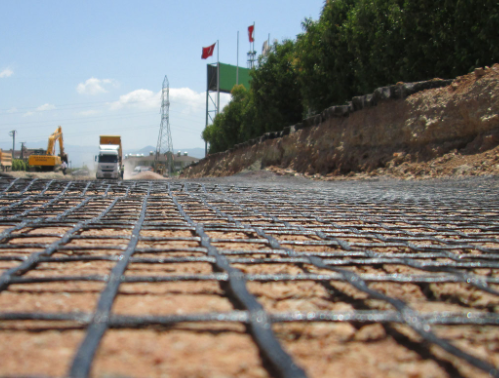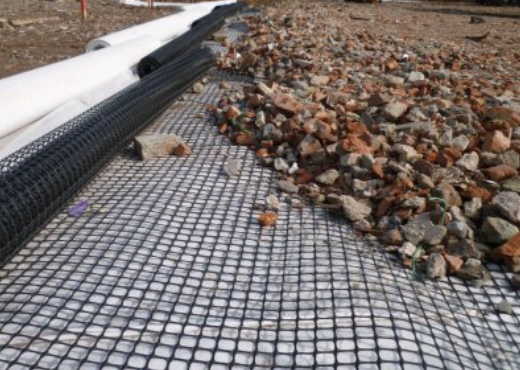- Understanding the Role of Geomembrane Liners in Waste Management
- Innovations in Geomembrane Liners for Water Management
- Geomembrane Liners: A Comprehensive Guide
- The Future of Geomembrane Liners in Civil Engineering
- Geomembrane Liners: Enhancing Landfill Stability
Manager:
WhatsApp:+86 177 0135 2670
Tel:+86 177 0135 2670
Email:marketing@okorder.com
Address:3rd Floor, No.2 Building, No.1 Sanlihe Road
What is the function of geogrid in pavement?
Pavements are indispensable elements of contemporary infrastructures, which are essential for transportation networks and act as surfaces for movements of vehicles and pedestrians. Several engineering interventions exist to ensure that pavements last long and are durable, with geogrid representing one very crucial component. Geogrid plays a number of roles within pavement systems and this has a bearing on their stability, strength as well as overall performance. Consequently, we will discuss the role played by geogrid in pavements such as its functions including plastic geogrid, wholesale geogrid, fiberglass geogrid and glassfiber geogrid.

Understanding Geogrid:
Geosynthetic materials known as polymers or fibers arranged in grid-like patterns make up geogrids. This grid pattern gives support to soils; aggregates or other construction materials used during construction process. For pavements specifically, the main reason why it is used is to improve mechanical properties of pavement layers through an even distribution of loads hence reducing deformation and preventing them from cracking.
Enhancing Pavement Stability:
Improving stability is one of the key reasons why engineers use geogrids on roads. When vehicles move over pavements they generate dynamic loads that can cause internal stress within different layers making up the road section. Hence by facilitating uniform spread of these loads across the entire structure of any given road it reduces chances of rutting, deformations or even collapse associated with such stresses. By strengthening base and subbase layers, pavement stability is enhanced thus prolonging its service life.
Improving Load Distribution:
Another function that must be served by any type of geogrid used in pavements is load distribution improvement. Different types of vehicles have varying load levels on roads caused by traffic volumes coming from them. Absent appropriate reinforcement mechanisms these stresses result into localised concentrations thereby causing distresses like ruts cracks and potholes on pavements. Consequently, it reduces occurrence of localized damages by ensuring that the applied loads are uniformly distributed over the whole pavement so as to achieve an even stress distribution in its layers.
Preventing Cracking and Rutting:
Cracking and rutting are among the common pavement distresses both observed under high traffic situations or harsh environmental conditions. Geogrids reinforce these structures with tensile strength. This incorporation reinforces the 41 material’s tensile strength averting crack inception while at same time checking formation of ruts in roads. This proactive manner of designing pavements ensures a long lasting smooth road surface.
Types of Geogrid:
Different geogrids designed for use in pavements exhibit a range of physical properties and advantages, which make each one unique from others used for similar purposes. Some commonly utilized kinds include plastic geogrid, wholesale geogrid, fiberglass geogrid and glassfiber geogrid which come with different levels of strength, stiffness and durability.
Plastic Geogrid:
The lightweight nature and flexibility characterizes this type of reinforcement manufactured from high-density polyethylene (HDPE) or polypropylene (PP). Besides having a grid structure that provides it with excellent tensile strength and stiffness, plastic geogrid is also ideal for stabilizing soil materials used within aggregate layers during pavement construction. It has a good resistance to chemical deterioration thus assures durability for many years depending on where it is used. Its installation simplicity together with cost-effectiveness makes it preferable during pavement repairs.
Wholesale Geogrid:
Wholesale refers to any product bought directly from manufactures in larger quantities typically sold at relatively lower prices than buying them individually from retailers or local distributors.Consequently when dealing with different projects then this kind of products will be made out using various materials; accordingly they possess diverse levels concerning their strengths as well as different arrangements within their grids.Normally large-scale road constructions projects benefit from the economies of scale associated with wholesale purchasing of reinforcement materials.
Fiberglass Geogrid:
The other one is glass fiber geogrid, which is a reinforcement material consisting of interlaced fibers. It can improve the structural integrity of pavement layers thanks to its high tensile strength and rigidity. Laid under asphalt overlays, these geo-grids are lightweight and durable in order to facilitate their quick installation and long term performance. They also work great as supporting elements for either cohesive or granular soil types; thus, they are very flexible devices meant for road stabilization.

In conclusion:
Geogrid plays a very critical role of reinforcement in enhancing the performance and life span of pavements through strengthening mechanical properties. The commonly used types include plastic geogrids, wholesale geogrids, fiberglass geogrids and glassfiber geogrids. Geosynthetic materials allow pavement engineers to provide better stability, load distribution, resistance against cracking and rutting when planned into the mix design on roads which further guarantees transportation infrastructure.”
- Previous:Why do you need geogrid?
- Next:What is a geogrid vs geotextile?
-
2024-06-12Asphalt fiberglass geogrid construction plan
-
2024-06-04Asphalt fiberglass geogrid construction plan
-
2024-05-21What is the disadvantage of geogrid?
-
2024-05-21What is the lifespan of geogrid?
-
2024-05-21What are the 3 main uses of a geotextile?






